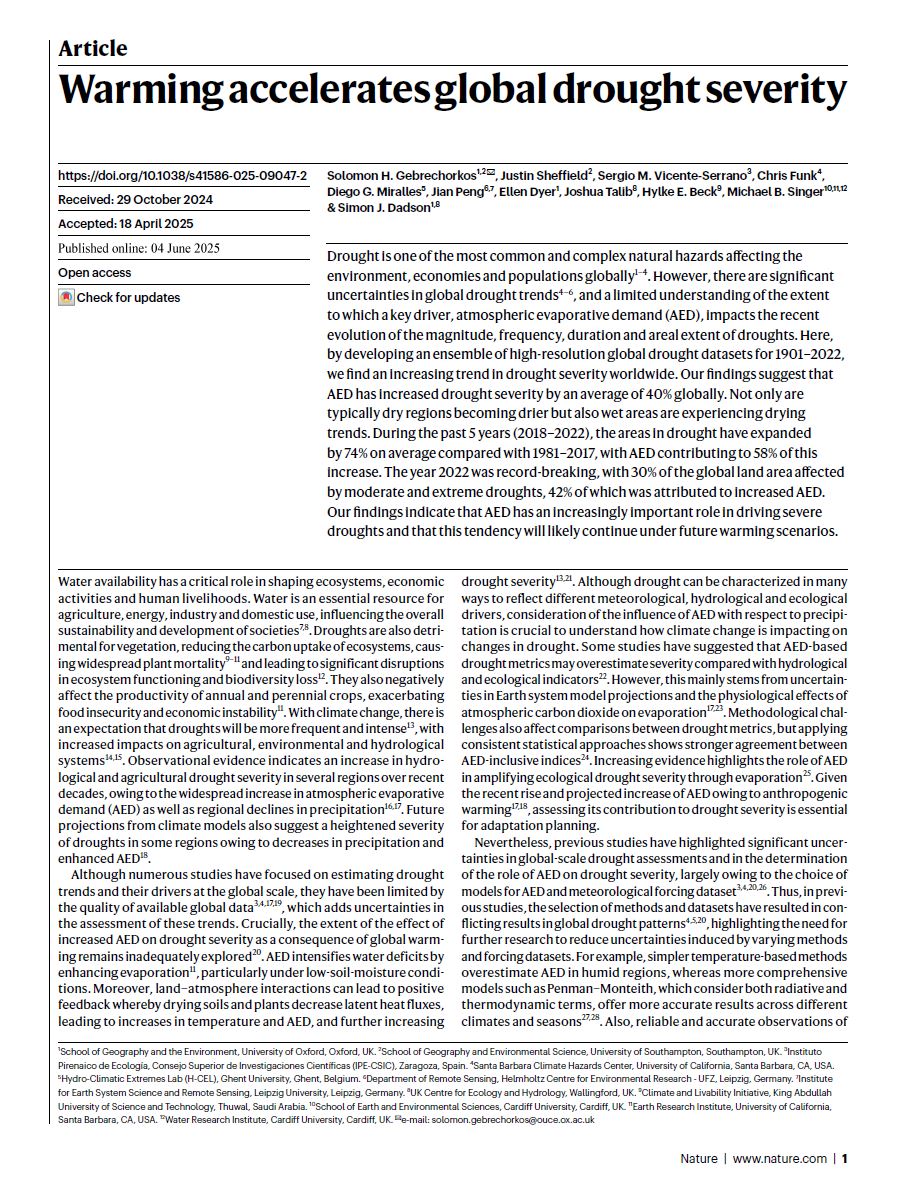Solomon H. Gebrechorkos, Justin Sheffield, Sergio M. Vicente-Serrano, Chris Funk, Diego G. Miralles, Jian Peng, Ellen Dyer, Joshua Talib, Hylke E. Beck, Michael B. Singer & Simon J. Dadson
Drought is one of the most common and complex natural hazards affecting the environment, economies and populations globally. However, there are significant uncertainties in global drought trends, and a limited understanding of the extent to which a key driver, atmospheric evaporative demand (AED), impacts the recent evolution of the magnitude, frequency, duration and areal extent of droughts. Here, by developing an ensemble of high-resolution global drought datasets for 1901–2022, we find an increasing trend in drought severity worldwide. Our findings suggest that AED has increased drought severity by an average of 40% globally. Not only are typically dry regions becoming drier but also wet areas are experiencing drying trends. During the past 5 years (2018–2022), the areas in drought have expanded by 74% on average compared with 1981–2017, with AED contributing to 58% of this increase. The year 2022 was record-breaking, with 30% of the global land area affected by moderate and extreme droughts, 42% of which was attributed to increased AED. Our findings indicate that AED has an increasingly important role in driving severe droughts and that this tendency will likely continue under future warming scenarios.
Read the accompanying piece in The Conversation

